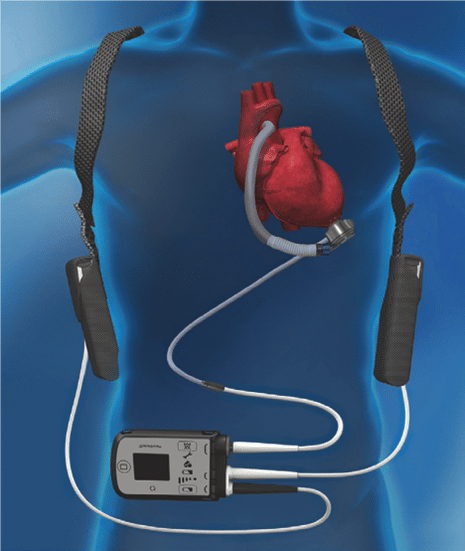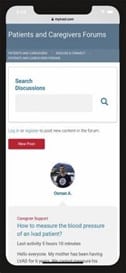Our LVAD Program, launched in 2018, is dedicated to providing exceptional care and outstanding outcomes for patients living with advanced heart failure. We are proud to be the only nationally recognized Center of Excellence for Heart Failure in Georgia, offering patients and families access to the highest level of expertise. Our program is led by an experienced multidisciplinary team that works closely with each patient to ensure compassionate, personalized care at every step of the way.
One of the unique strengths of our program is having specialized rehabilitation centers located right on our hospital campuses, allowing patients to recover and build strength while staying connected to their care team. We also make the referral process simple and efficient — our LVAD coordinators can be reached directly by phone, email or fax, and most patients are evaluated with a decision made within 48 hours. Whether you are a patient or a referring provider, you can count on us for seamless communication, timely access, and a commitment to helping patients live fuller, healthier lives.
Patient-Centered Care
Our patient navigators and VAD coordinators at Georgia Heart Institute’s Heart Failure Treatment & Recovery Center will walk patients through each step of the process. As a comprehensive and patient-focused program, we walk alongside our patients on this journey to ensure that all their questions are answered and that they have the resources they need.
What is an LVAD?
An LVAD is a surgically implanted, battery-operated pump that supports the heart’s pumping function and helps circulate oxygen-rich blood throughout the body. At Northeast Georgia Medical Center (NGMC) Gainesville, our surgical team implants the Abbott Heartmate 3, the only FDA-approved LVAD.

An LVAD implant is made up of:
- Heart Pump (LVAD): Connected to the left side of the heart, it moves blood from the heart to the rest of the body.
- Batteries: Provide up to 17 hours of uninterrupted power.
- Driveline: Transfers power and information between the controller and heart pump. This component is partially outside the body.
- Controller: Powers and checks the pump and driveline. It weighs less than 1 pound, discreetly slips into a front pocket and alerts the user about how the system is working.

- Abbott HeartMate 3
- Only FDA approved pump currently implanted
- Fully magnetically levitated LVAD
- Abbott HeartMate II
- No longer implanted
- First continuous-flow LVAD
- Short-term support for patients in the ICU
- Temporary devices used for a period of days to support the heart while patients are being evaluated for heart recovery or longer-term devices
- Intra-Aortic Balloon Pump (IABP)
- Abiomed Impella
- Pro-Tek Duo: Support for the Right side of the heart
- Extracorporeal Membrane Oxygenation (ECMO): Life support system that takes over all functions of the heart and lungs for a period of days while the heart or lungs recover from serious injury
- Temporary devices used for a period of days to support the heart while patients are being evaluated for heart recovery or longer-term devices
The LVAD implant has a pump that pulls blood from the left ventricle. The pump sends the blood through a tube to a large blood vessel, called the aorta, that carries the blood from the heart to the rest of the body. Another tube goes from the pump to the outside of the body through the abdominal wall. The external portion of the LVAD contains the battery and control system.
Not all patients need an LVAD implant. Our multidisciplinary team at Georgia Heart Institute carefully determines a patient’s eligibility for LVAD surgery to ensure that the patient will truly benefit from the surgery. This team includes cardiac surgeons, heart failure providers and VAD coordinators as well as representatives from psychology, palliative care, physical therapy, and pharmacy. LVAD patients are determined based on heart failure status, prognosis, health history, and family/social support.
- Referral to our VAD Program
- Our financial team will verify insurance benefits and coverage.
- Education from our VAD Coordinators
- Thorough evaluation by our advanced heart failure physicians, cardiothoracic surgeons and VAD multidisciplinary team.
- The evaluation will be done as an inpatient visit, typically over 48 hours. This will include numerous tests and meetings with our multi-disciplinary team members.
- Once all the tests and meetings with the multidisciplinary team have been completed, the VAD team will meet to discuss your case.
- If approved, the Cardiothoracic team will schedule the surgery.
LVAD Procedure at Georgia Heart Institute
Our nationally respected cardiothoracic surgeons have been performing LVAD surgeries since 2018. Each year, we perform dozens of LVAD procedures and provide consistently high outcomes for heart failure patients. We have one of the highest-volume programs in the state of Georgia, ensuring that our patients have access to a team that has a high level of expertise.
Through our multidisciplinary team, our patients are connected to a full spectrum of care to ensure the best outcomes from their surgery. We monitor patients closely and track our outcomes compared to national benchmarks on LVAD implants.
Our Average Length of Stay from implant to discharge is 17 days, compared to the national average of 26 days.
Many of our patients experience the benefits of:
- Fewer complications after implantation
- Exceptionally low hospital readmission rates post-implant compared to national averages
- A lower length stay in the hospital after the implant procedure, compared to national averages
- Dramatic improvements in quality of life
After a patient is released from the hospital, they will have post-surgical follow-ups with their LVAD care team, clinical oversight from their heart failure specialist and ongoing support.
Our rehabilitation program offers nutritional counseling, a customized and clinically monitored exercise program, access to lifelong ongoing support and more. Most important, patients can return to many of the activities they enjoy once they recover from the procedure. Learn more about our rehab program.
There will be a VAD Coordinator available for any emergencies, 24 hours a day, seven days a week.

We have an annual celebration for our patients around Valentines Day that we call VADentine’s Day. We bring our patients together with our VAD team, clinic staff and hospital staff to celebrate everyone involved.
The VAD coordinators will work with you to ensure you and your support system have all the education and resources you need, from the evaluation phase to post-op, discharge and as an outpatient.
MyLVAD has developed a mobile app to help you access everything that MyLVAD has to offer from the convenience of your mobile device. It includes the hospital locator along with features such as the new community locator and access to the most important information available. The MyLVAD App is available for both Apple and Android mobile devices and can be found in their respective app stores. Give us your comments so that we can make it better for you!


Heart failure occurs when the heart is unable to pump enough blood to meet the body’s demands. There is no cure for heart failure, but a patient’s symptoms can be managed and even improved through the right monitoring and care plan.
For patients in the later stages of heart failure, medication, lifestyle changes and less intensive therapies may fail to improve their condition. For those patients, an LVAD implant can provide dramatic improvement to their quality of life, in some cases enabling patients to return to living independently, travel, exercise and even return to work.
What is an LVAD?
LVAD is a surgically implanted, battery-operated pump that supports the heart’s pumping function and helps circulate oxygen-rich blood throughout the body.
An LVAD implant is made up of:
- Heart Pump (LVAD): Connected to the left side of the heart and moves blood from the heart to the rest of the body.
- Batteries: Provide up to 17 hours of uninterrupted power.
- Driveline: Transfers power and information between the controller and heart pump. This component is partially outside the body.
- Controller: Powers and checks the pump and driveline. It weighs less than 1 pound, discreetly slips into a front pocket and alerts the user about how the system is working.
The LVAD implant has a tube that pulls blood from the left ventricle into a pump. The pump sends the blood to a large blood vessel, called the aorta, that carries the blood from the heart to the rest of the body. Another tube goes from the pump to the outside of the body through the abdominal wall. The external portion of the LVAD contains the battery and control system.
Not all patients need an LVAD implant. Our multidisciplinary team at Georgia Heart Institute carefully determines a patient’s eligibility for LVAD surgery to ensure that the patient will truly benefit from the surgery. This team includes cardiac surgeons, heart failure providers, VAD coordinators and educators as well as representatives from psychology, palliative care, physical therapy and rehab, nursing pharmacy and the NGHS chaplain department. LVAD patients are determined based on heart failure status, prognosis, health history, and family/social support.
LVAD Procedure at Georgia Heart Institute
Our nationally respected cardiothoracic surgeons have been performing LVAD surgeries since 2018. Each year, we perform dozens of LVAD procedures and provide consistently high outcomes for heart failure patients. We have one of the highest-volume programs in the state of Georgia, ensuring that our patients have access to a team that has a high level of expertise.
Our patient navigators and VAD coordinators at the Heart Failure Center of Georgia Heart Institute will walk patients through each step of the process. As a comprehensive and patient-focused program, we walk alongside our patients on this journey to ensure that all of their questions are answered and that they have the resources they need.
Through our multidisciplinary team, our patients are connected to a full spectrum of care to ensure the best outcomes from their surgery. We monitor patients closely and track our outcomes compared to national benchmarks on LVAD implants.
Many of our patients experience the benefits of:
- Fewer complications after implantation
- Exceptionally low hospital readmission rates post-implant compared to national averages
- A lower length of stay in the hospital after the implant procedure compared to national averages
- Dramatic improvements in quality of life
- After a patient is released from the hospital, they will have post-surgical follow-ups with their LVAD care team, clinical oversight from their heart failure specialist and ongoing support.
- Our rehabilitation program offers nutritional counseling, a customized and clinically monitored exercise program, access to life-long ongoing support and more. Most important, patients can return to many of the activities they enjoy once they recover from the procedure. Learn more about our rehab program.
Connect with our Center
If you’re ready to get started, please choose a provider below and schedule an appointment.

